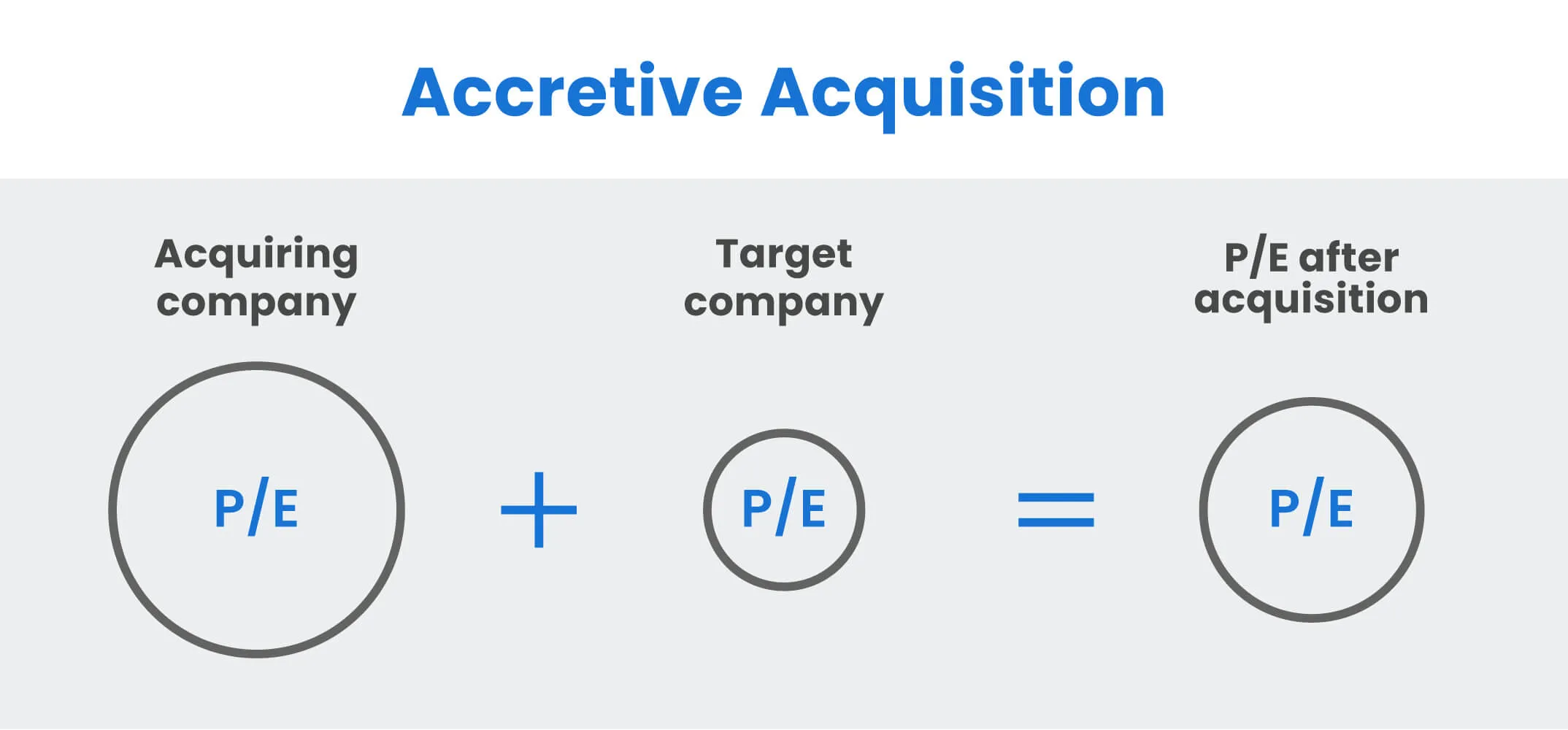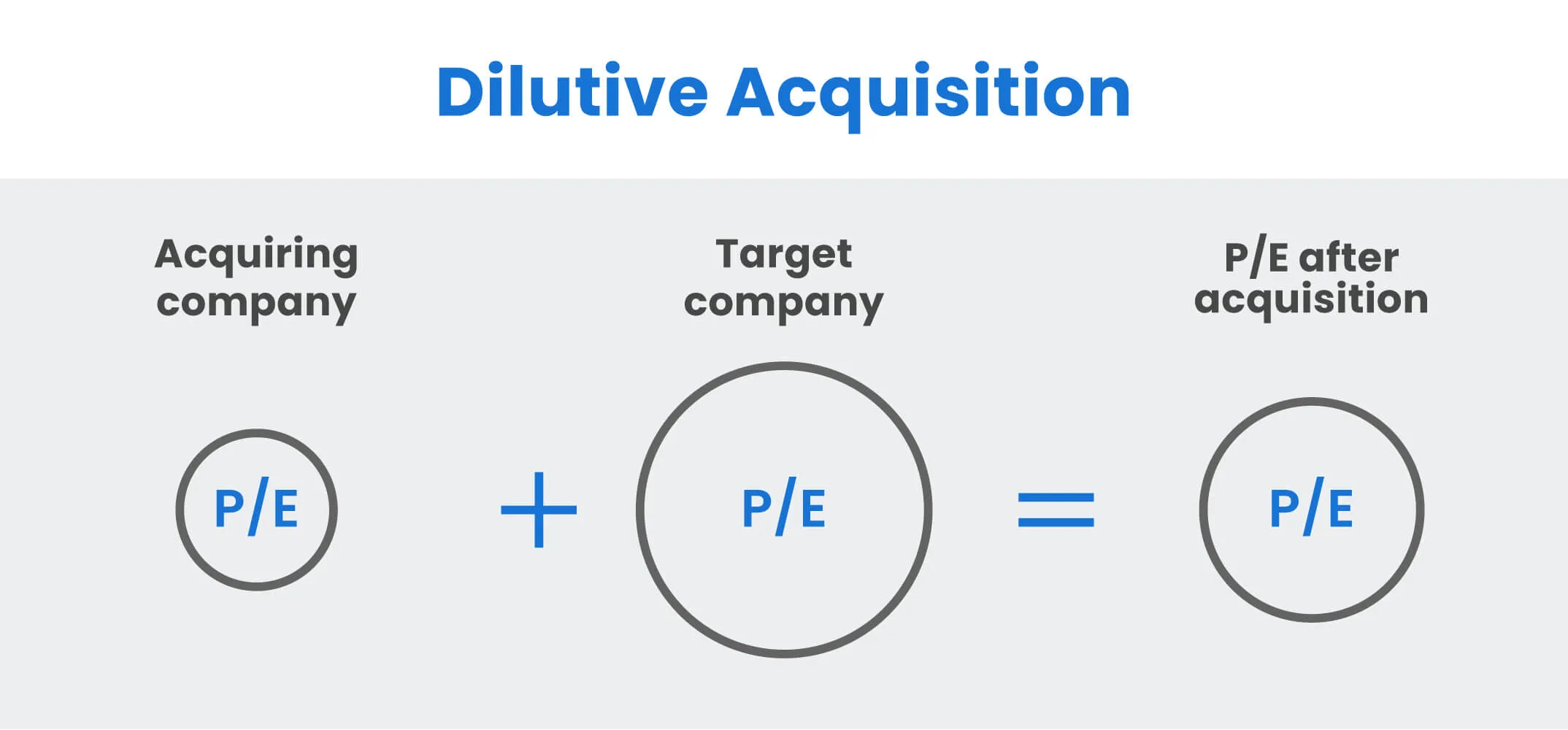Value adding M&A transactions are what drive DealRoom's platform.
But what is meant by ‘value adding transactions?’
In simple terms, this means ‘one plus one equals three’, a transaction where the combined entity is greater than the sum of the parts.
The most common way of measuring this (for publicly listed companies) is through observing the movement of share prices after the deal has happened.
In an effort to show that the transaction has added value, the CEOs of public companies often point to the fact that the deal was ‘accretive’ - the earnings per share (EPS) is greater than it was before the deal went through.
If the deal was ‘dilutive’ - whereby the EPS is less than it was before the transaction, they’ll find other ways to justify that the deal added value.
So, while not the only indicator for a deal’s perceived success, this is a good one.
DealRoom help dozens of companies organize their M&A process and in this article, we look a little further into the fundamentals of accretive and dilutive M&A.
What is Earnings per Share (EPS)?
Earnings per share - commonly referred to as EPS - is a metric used by investment bankers to measure a company’s profitability. It is calculated by dividing the company’s net profit by its outstanding shares of common stock (NB: preferred shares are excluded from the calculation).
It is commonly used in tandem with the Price to Earnings Ratio (P/E Ratio) - itself referred to as the price multiple or the earnings multiple - which measures the company’s current share price relative to its EPS.

What is accretive acquisition
Accretive acquisitions increase the EPS of the acquiring company.
Generally speaking, this form of acquisition happens when the P/E Ratio of the acquiring firm is greater than that of the target company (thus, allowing the acquiring firm to lower its P/E Ratio).
As the stakeholders of most companies tend to keep a close eye on how their share prices are trending, the idea of acquiring companies with lower P/E Ratios is a popular one with CEOs, who - in theory, if not always in practice - can give their own P/E Ratios a short-term boost (a practice known as ‘bootstrapping’).

What is dilutive acquisition
Dilutive acquisitions decrease the EPS of the acquiring company, through lower or negative earnings.
The logic here is the exact opposite to that of accretive acquisitions: In general, dilutive acquisitions happen when the P/E Ratio of the company being acquired is greater than that of the acquiring company.
CEOs of companies that acquire companies with higher P/E Ratios will tend to emphasize the strategic benefits of the acquisitions, which as we will show in the section which follows, may be a perfectly logical position to take.

Does an acquisition have to be accretive to add value?
In short, the answer is no. Here are some important points to note:
- The market can be (and often is) wrong. Financial ratios like EPS and the P/E Ratio make one huge assumption: That markets are right. The debate on how right markets are is beyond the scope of this article, but let’s just say that there are a lot of people out there making a lot of money on the basis that the market is usually wrong.
- Accretive and Dilutive Acquisitions are Intended to be Indicators: And at that, they’re not particularly sophisticated indicators. Many of the best companies on the stock exchange have extremely high PE Ratios, while some of the worst have attractive, low ratios. The takeaway? Take indicators with a pinch of salt.
- Time horizons distort results: Closely related to all of this is when the measurement is made. Today, the PE Ratio of a stock could be 10. Tomorrow, it could be 11. Or 8. Or 9.5. Similar to event studies (which measure the effect of an ‘event’ such as an M&A transaction on share price), over how long a period should the movement in price be taken? One day? Three days? Two weeks?
- Nothing trumps good strategy: Whether the deal is accretive or dilutive fades into irrelevance when compared with a solid growth strategy underpinned by due diligence. Ultimately, many market participants have short-term horizons (as much as they like to suggest otherwise), while good corporate strategy is always based on the long-term. If the deal truly makes sense, there’s no need to be overly concerned
Conclusion
Dilutive and accretive acquisitions are a useful but imprecise tool for quickly assessing whether a deal will add or take from a company’s share price.
It has little or no long-term value however, perhaps only hinting at a company’s wider acquisition strategy.
Similarly, for CEOs considering an M&A transaction, a company with a low P/E ratio may destroy long-term value and a company with a high P/E may be transformative.
In short, there are no short-cuts to long-term value growth. Adopt good M&A practice, including due diligence and integration, to give your company the best chance of doing so.




















.png)
.webp)



.webp)
.webp)
.webp)





.png)
.png)
.png)
.svg)

.svg)
.png)
